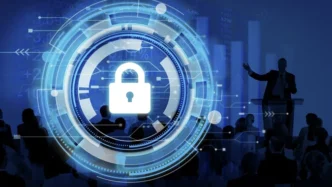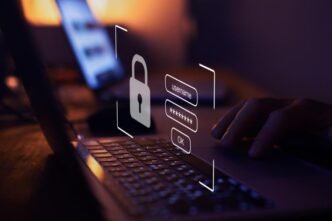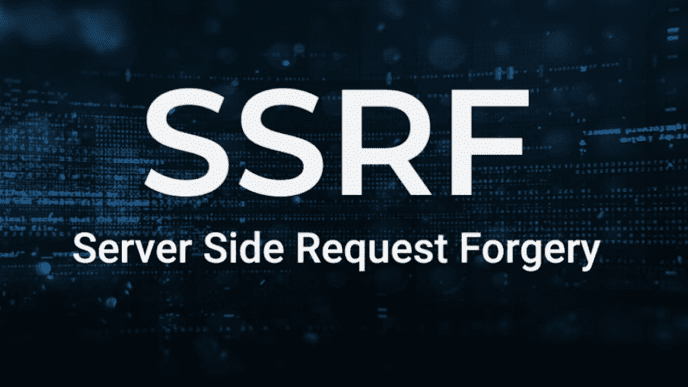Cybercriminals are taking impersonation schemes to new heights, and the BianLian Ransomware threat just got a dangerous twist. According to recent warnings from the Federal Bureau of Investigation (FBI), fraudsters are now mailing false ransom letters that pretend to come from the notorious BianLian gang. These letters target executives across the United States, promising havoc unless a hefty sum is paid. Below, we dive into what this scam entails, why it matters, and how businesses can guard themselves against these malicious tactics.
The Rise of BianLian Impersonators
Cybercrime has grown rapidly in recent years, leading to countless attacks on organizations of all sizes. Although the real BianLian group has long been known for attacking critical sectors and employing sophisticated ransomware, scammers are now masquerading as BianLian in an attempt to extract money without even deploying an actual cyberattack. This tactic exploits the fear surrounding the legitimate BianLian Ransomware group, making it more likely that victims will comply with demands.
Furthermore, security analysts suggest these scammers are leveraging existing media coverage and official alerts to add authenticity to their claims. By capitalizing on the name recognition of BianLian, the fraudsters hope anxious executives will pay up before verifying the legitimacy of the threat.
Disturbing Details of the Fake Ransom Notes
The FBI’s notification highlights how these threatening letters arrive by mail, either addressed directly to top-level executives or sent to corporate headquarters. Each letter claims the recipient’s internal network has been infiltrated by hackers who allegedly stole sensitive data. The scammers then threaten to publish or leak this information unless a ransom—ranging from $250,000 to $500,000—gets paid in Bitcoin.
In an effort to seem credible, the letters typically include a QR code that directs the user to a Bitcoin wallet. Threatening to ruin reputations, breach client confidentiality, or disrupt normal operations, these notes play on the fear that any delay could cost an organization both money and goodwill. Additionally, the letters include a return address pointing to a Boston-based office building, further adding to the façade that a legitimate hacking collective is behind the communication.
Healthcare Executives in the Crosshairs
Although the FBI did not reveal a comprehensive list of target industries, early data from cybersecurity firms like Arctic Wolf suggests executives in the healthcare sector are among the primary recipients. Healthcare organizations store a treasure trove of sensitive data, including personal patient information and critical medical records. That makes them prime targets for extortion attempts, whether from bona fide hacker groups or opportunistic scam rings.
Beyond healthcare, it remains possible that other sectors—like finance, education, and technology—could also see an uptick in fake [BianLian Ransomware] notes. Security analysts warn that scammers often adapt their methods quickly, targeting any industry where executives might feel pressured to pay to protect organizational credibility.
Inside the Real BianLian Ransomware Threat
Before this impersonation scheme surfaced, the true BianLian Ransomware group already posed a major threat. Linked to Russia-based cybercriminal networks, BianLian caught the attention of government agencies and cybersecurity experts for its aggressive intrusion methods. In November of last year, the Cybersecurity and Infrastructure Security Agency (CISA) issued a stark alert about BianLian’s tactics. At the time, officials confirmed the group had hit multiple U.S. critical infrastructure sectors since June 2022.
Notably, BianLian typically uses advanced encryption to lock down systems, combined with exfiltration of confidential files. Victims are then forced to pay ransoms to regain access to critical data or avoid public exposure of sensitive information. The gang’s track record of sophisticated attacks makes it all too easy for scammers to exploit the BianLian name—especially when many organizations are already on high alert due to the group’s reputation.
How the Scam Differs from Actual Ransomware Attacks
Despite references to [BianLian Ransomware], these fake letters lack tangible cyber-intrusion activity. The scammers count on fear and confusion to shortcut any thorough investigation. Typically, legitimate ransomware attackers will demonstrate proof, such as showing stolen data or providing evidence of network compromise. Here, the criminals rely solely on unverified threats.
Moreover, the use of a standard return address, along with a generic QR code for payments, signals a less sophisticated operation than what’s usually seen in real BianLian attacks. Cybersecurity professionals emphasize that genuine ransomware groups often use unique cryptocurrency wallets and maintain clandestine communication channels. In this scam, the mass-mailed letters hint at a broad, shotgun-style approach—likely intended to catch as many high-level targets as possible.
FBI’s Stance and Known Victims
While the FBI acknowledges the severity of the situation, the agency has not publicly identified any confirmed victims. As of now, it’s unclear how many individuals or organizations have received these bogus demands, although cybersecurity experts believe there may be more unreported cases. The FBI also states it has not found any evidence linking the perpetrators of these letters to the actual BianLian gang.
Still, the absence of confirmed victims does not diminish the potential damage. Even if just a handful of executives panic and pay, that success could encourage more criminals to refine and replicate similar schemes.
Why Organizations Should Remain Vigilant
Cyberthreats evolve rapidly, so executives, risk managers, and security teams must remain cautious. Attackers—real or fake—exploit fear, uncertainty, and time-sensitive decisions. The best defense against any extortion attempt is a robust cybersecurity strategy, which includes:
- Regular Security Training: Ensure all staff recognize phishing attempts, suspicious mail, or unusual communications.
- Incident Response Plans: Have protocols ready in case of a potential breach, including steps to validate threats and communicate internally.
- Data Backup and Encryption: Store critical data offsite and securely, reducing the leverage cybercriminals can gain.
- Frequent Audits: Conduct regular security assessments to identify and patch vulnerabilities.
Moreover, open communication channels between different departments can help executives avoid making unilateral, panic-driven decisions.
Recommended Steps if You Receive a Fake Ransom Note
If you or your organization receives a suspicious letter claiming affiliation with [BianLian Ransomware], it’s important to take immediate action:
- Document the Letter: Keep a record of the envelope, letter, any addresses, and the date received.
- Verify Claims: Consult with your internal IT or cybersecurity team to check for evidence of actual intrusion.
- Contact Authorities: Report the incident to the FBI’s Internet Crime Complaint Center (IC3) or your local field office.
- Resist Immediate Payment: Paying a ransom—especially one lacking verification—can encourage further extortion and might not guarantee safety.
The Broader Implications of Impersonation Attacks
As cybercriminals get bolder, impersonation tactics extend beyond phone calls and email spoofing. Threat actors now exploit the notoriety of established hacking groups. This development underscores a worrying trend: criminals realize they don’t always need real hacks to make money; fear alone can be profitable.
Looking ahead, experts warn that other infamous ransomware gangs—like LockBit, Hive, or BlackCat—could also be impersonated in similar mail-based scams. Each new fraud underscores the importance of threat intelligence and vigilance in cybersecurity planning.
Final Thoughts on Protecting Your Business
From hospital administrators to tech CEOs, any executive can fall victim to fake ransom schemes. While these letters might seem old-fashioned in an era dominated by digital threats, they serve as a strong reminder that criminals will exploit every possible avenue. Staying prepared means knowing who your enemy is, how they operate, and the real dangers posed by groups like [BianLian Ransomware].
However, it also means recognizing red flags when opportunists attempt to imitate these organizations. By staying informed and having a robust, well-communicated incident response strategy, you can protect your team, your customers, and the reputation you’ve worked so hard to build. Continue monitoring guidance from agencies like the FBI and follow credible cybersecurity resources to remain one step ahead of the next impersonation scam.













